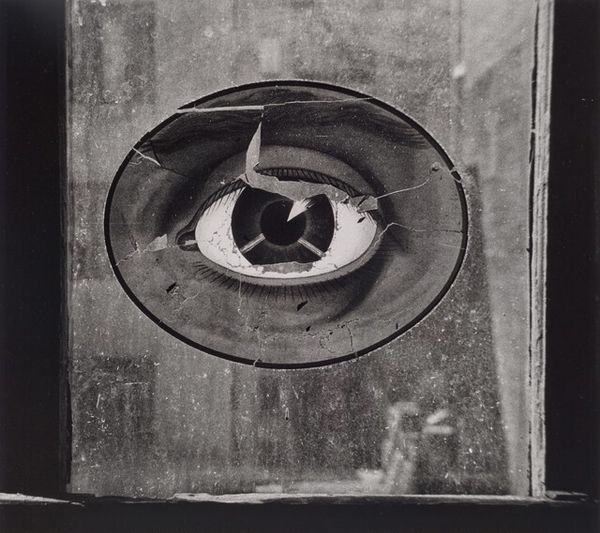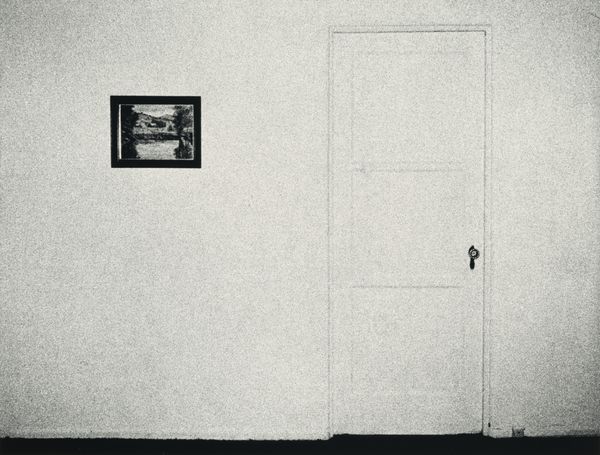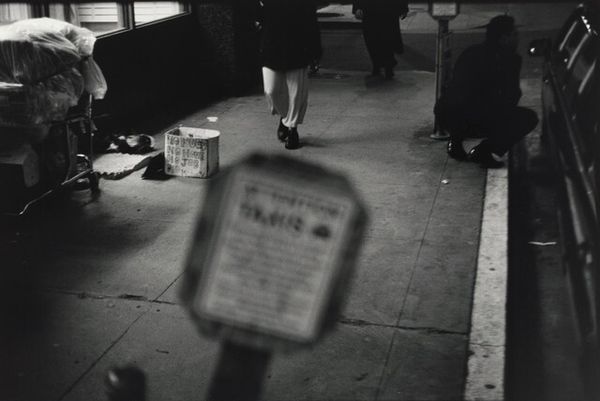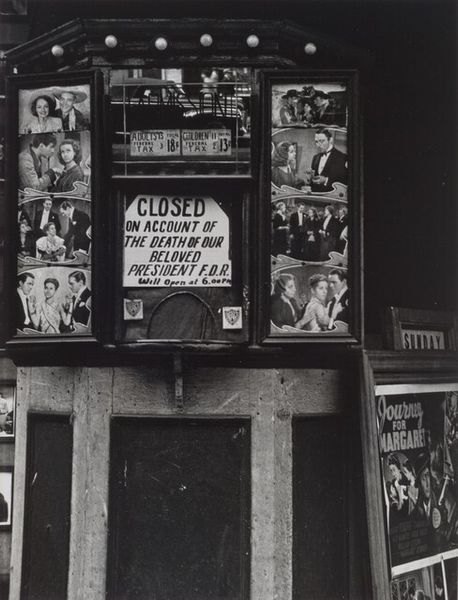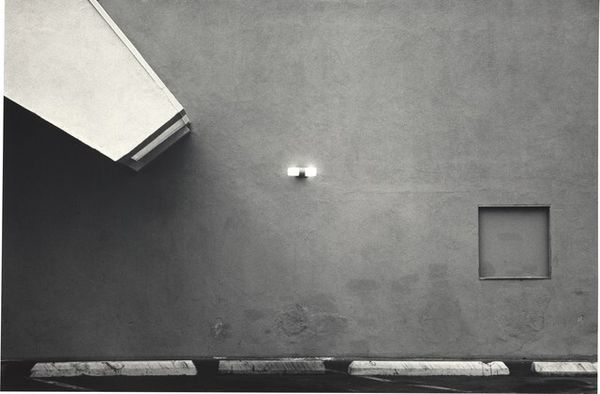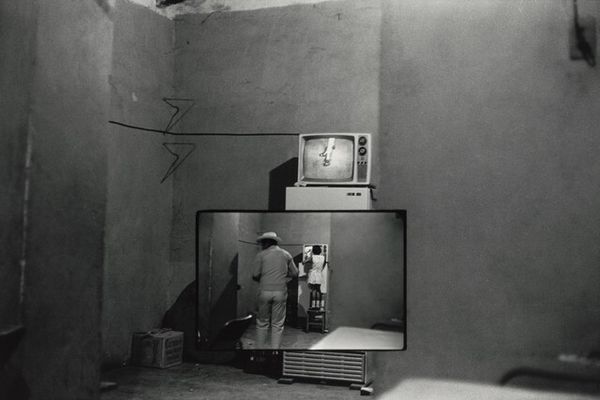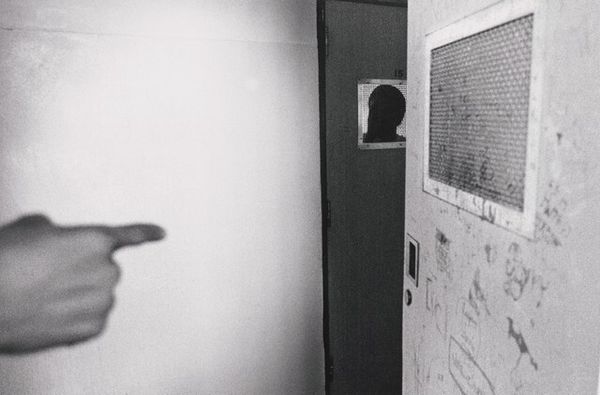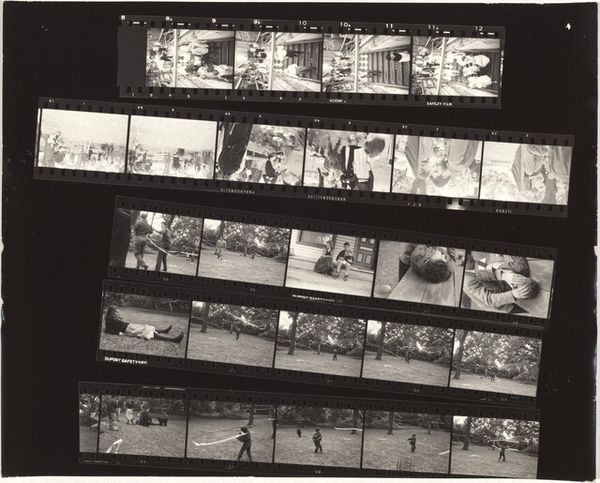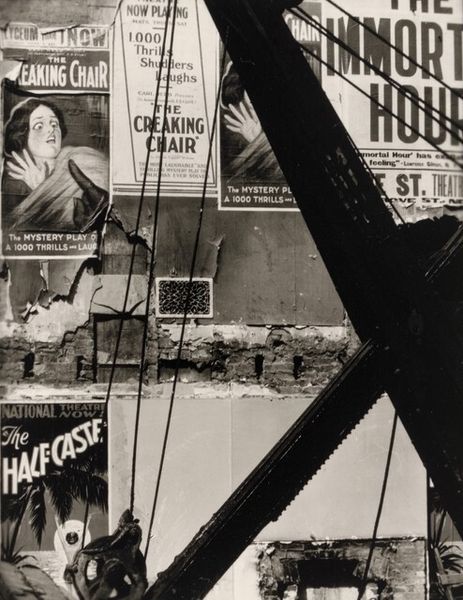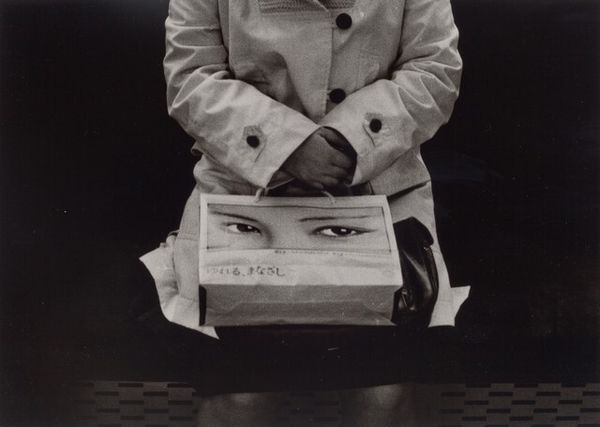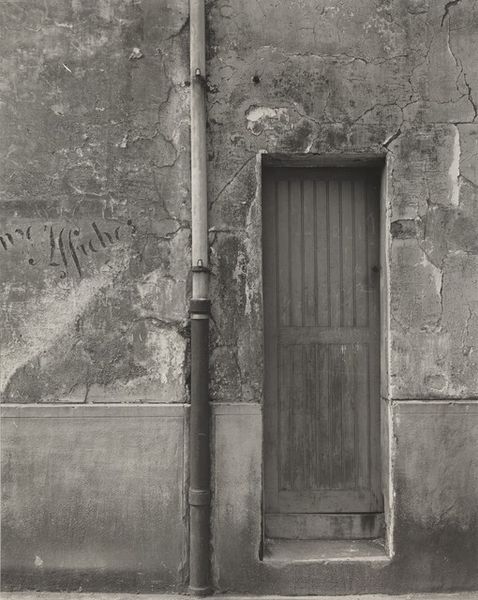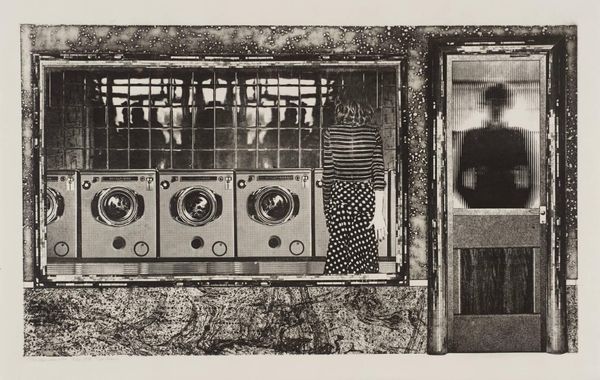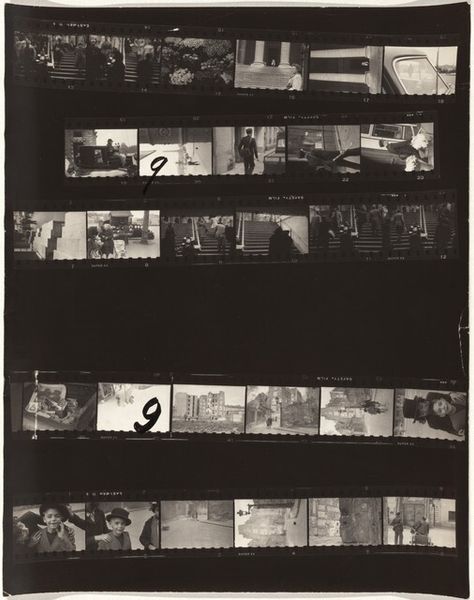
Dimensions: image/sheet/mount: 23.5 × 19.05 cm (9 1/4 × 7 1/2 in.)
Copyright: National Gallery of Art: CC0 1.0
Editor: This is "City Window Sign, Spanish Harlem, New York" by Godfrey Frankel, taken in 1948. It's a black and white photograph of, well, a city window with hand-lettered signs. One is particularly striking: "The Unseen Eye is Watching You." How do you interpret this work? Curator: This image encapsulates so much about the post-war period and the evolving social landscape. The "Unseen Eye" resonates with anxieties about surveillance and control, especially pertinent during the Cold War era. But consider also the Harlem context: Who is being watched? What are they being watched for? Editor: It almost feels… Orwellian. Is Frankel suggesting something about power dynamics within the community, or between the community and outside forces? Curator: Precisely! The photograph raises crucial questions about race, class, and the gaze. Whose "unseen eye" is it? Is it a benevolent protector, or a symbol of oppression? The other sign, advertising a July 4th program, adds another layer, doesn't it? Independence Day juxtaposed with a warning about constant surveillance... It challenges the idea of freedom and equality. What does it say about citizenship? Editor: That’s fascinating. I hadn't considered the relationship between the signs in that light. Curator: Think about the photographer's choice too, a photographer from outside of this particular community framing this moment, deciding what to show us... Are we part of the 'unseen eye'? Editor: It makes you think about the ethics of observation and representation. I'll definitely look at street photography differently now. Curator: Indeed. By questioning these power dynamics, we can start unpacking the complexities of visual culture.
Comments
No comments
Be the first to comment and join the conversation on the ultimate creative platform.
